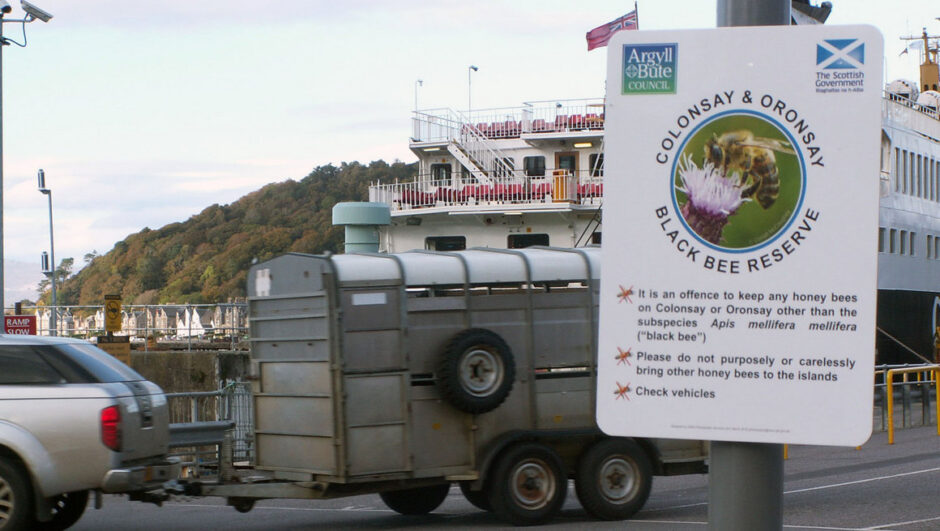We are honoured and delighted to have been able to assist Maxim Nekliudov to create his most recent masterpiece – NATIVES: Saving Scotland’s Original Honey Bees. He chronicles our efforts to try to re-establish our native honey bee. It has almost disappeared in most of Scotland in its pure form. In a parallel situation to that of the Scottish wildcats, the main threat to the survival of our dark native honey bees is from non-native stock, their ability to crossbreed with the indigenous subspecies and to do so over relatively long distances.
How do you counter the ever-increasing tide of traded and commercial stocks of other types of honey bee? Some countries in the EU have brought in regulations to control the type of honey bee which you can keep in large regions to ensure that they do not lose their native type to hybridisation. In Scotland we have one protected offshore island with pure native honey bees where this precious resource was set up, gained its protection and continues to thrive thanks to the efforts of one brave soul making his living from oysters and bees. How can we improve the situation and make more parts of Scotland a safe place for our native honey bee? Maxim documents our views on why conservation like this is important, on what we are starting to try to do to rejuvenate the type, on the long history of Colonsay as a home for the dark native honey bee (or ‘black bee’) and Andrew’s journey as he established the reserve. Maxim followed our visit to Colonsay where we started our own attempts to apply instrumental insemination as the best means of controlling matings in our native honey bee.
Maxim’s film is a delightful watch. Settle yourself down with a drink of your choice to experience his magical eye for atmosphere, for spotting the key moments, gently alluding to the characters involved, and for sneaking in his quirky sense of humour. The writer is going to call him The Bear from now on, not that this gentle, perceptive artist is anything other than the opposite in real life. Fifty minutes of the best videography around.
Free to view on YouTube: https://www.youtube.com/watch?v=DdS-_hfhc-o


